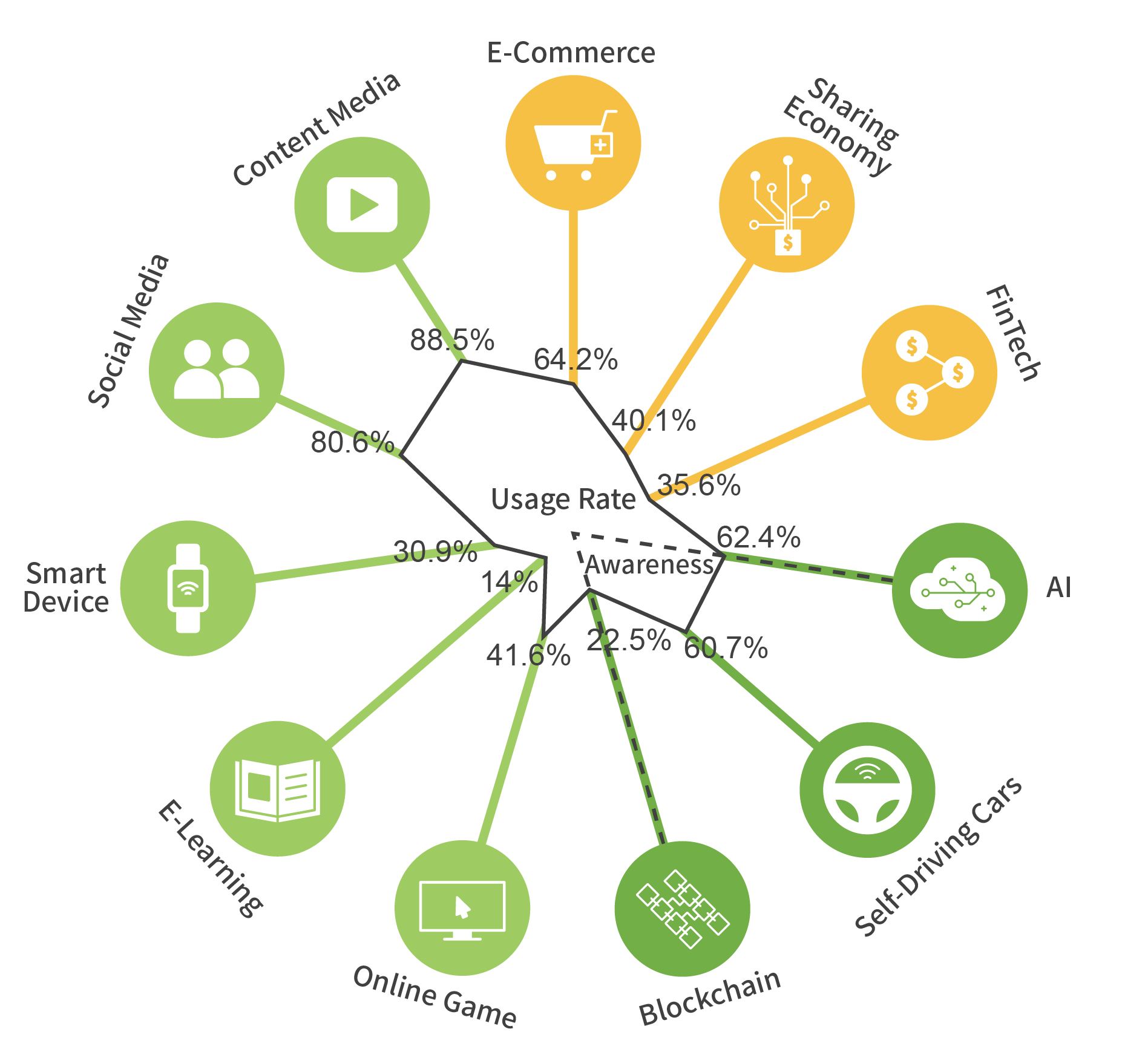Comparison of International Trends
Comparison of International Trends
Taiwan's Internet competitiveness is among the highest in the world. In addition to the high Internet access rate of its Internet users, comprehensive infrastructure, and high global competitiveness rankings, its E-commerce economy also continues to grow.
Overall Internet Usage Status
The personal and household Internet access rates rank among the highest in Asia.
Learn MoreOverview of Internet Service Applications
Taiwan's IT technology comprehensiveness ranked among the top 25.
Learn More




